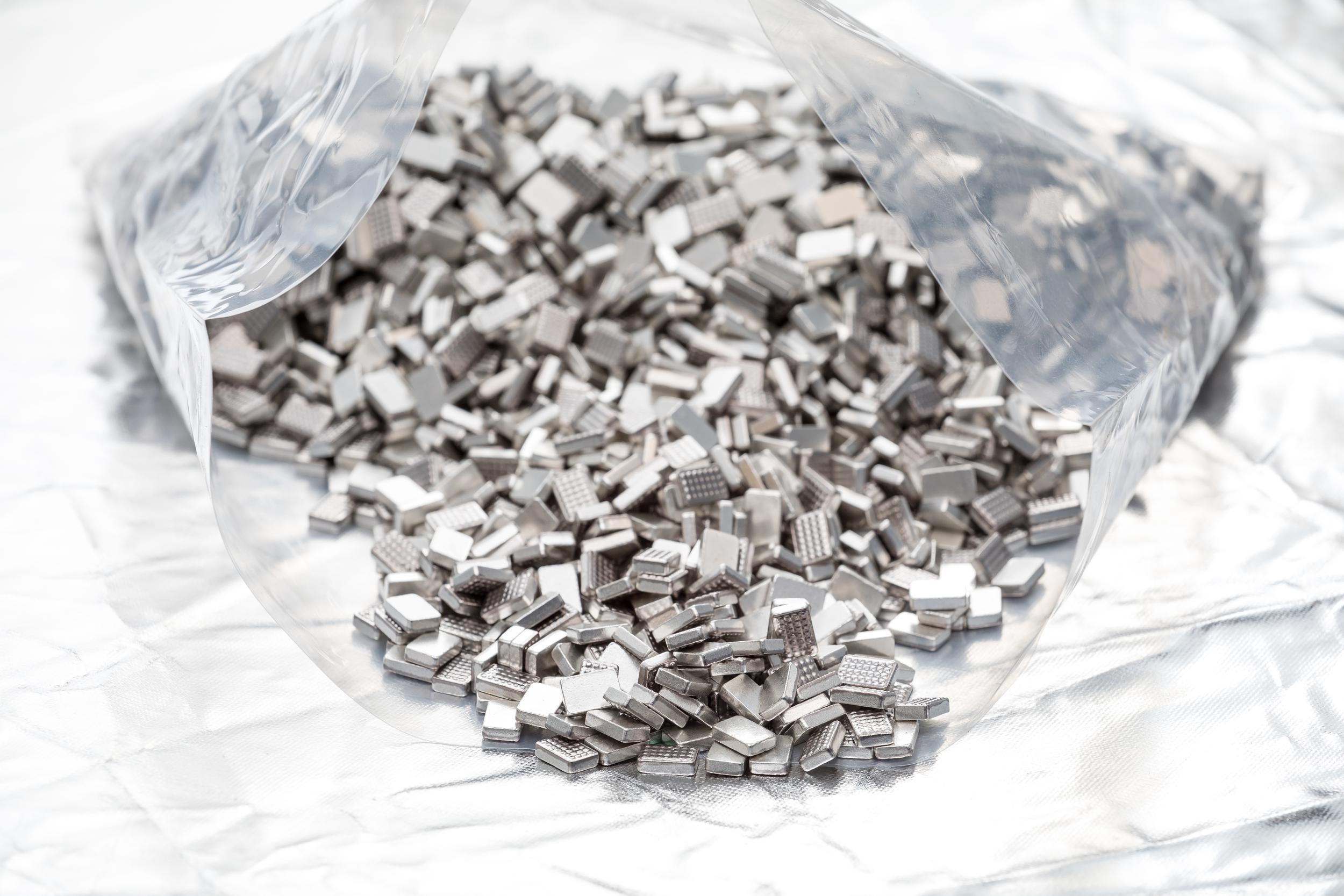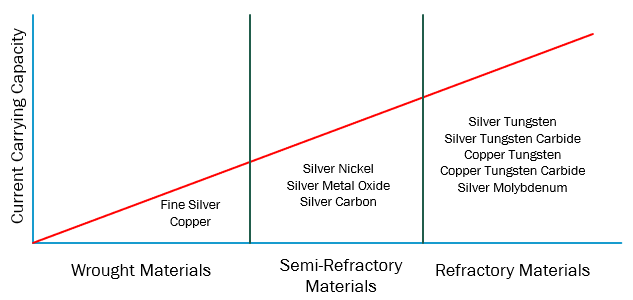
The design of electrical contact systems must be thoroughly vetted and reviewed, starting from the earliest design phases. This is done to ensure reliable performance in application. After all, failure of an electrical contact can often create a dangerous or even deadly situation for people nearby. During these design reviews, engineers will consider things like contact pressures, contact shapes, and surface asperity to ensure that the contact they are designing can handle the specified application conditions.
One of the more important parameters to be considered is material selection. There are so many different types of contact materials that are commonly used, each of which is suited for different conditions. How does one go about selecting the right material? Which factors need to be considered when making a contact material selection? The answer is not always simple or cut-and-dry, but the following information may help steer your material selection process in the right direction.
One of the main driving factors of electrical contact material selection is current carrying capacity. For low amperage applications, high conductivity materials like fine silver or copper are often the best suited contact materials, as they offer the least resistance to electrical flow and are very resistant to oxidation/tarnishing. However, as the amperage across a contact interface increases, temperature ratings of materials like fine silver and copper are often exceeded due to the added heat associated with arcing conditions and increased electrical flow. As a result, different contact materials need to be considered for higher amperage conditions.
The addition of refractory materials into the contact alloy is a reliable solution, as it makes the contact more resistant to decomposition by heat and pressure. Although the resistivity of the material will increase as refractory is added, the effects of this increased resistance can be countered by increased contact pressures in application. The fact that refractories are very resistant to pressure deformation makes this solution to increased electrical resistance viable. Copper and silver refractory alloys are ideal for higher amperage connections, as they combine the low resistivity of silver/copper with the temperature and pressure resistance of a refractory. This is why they are commonly used as arcing contacts in circuit breakers, switches, and electromechanical relays.

Figure 1: Current Carrying Capacity of Select Contact Materials
As a general guideline, electrical contacts can be broken up into three categories: light-duty, medium-duty, and heavy-duty contacts. Classification of electrical contacts into these three categories is primarily dependent on the application voltage.
Light-duty contacts are used in applications like instrument controls and telecommunication systems where arc-related wear is negligible. Usually these applications have voltages no greater than 250 V and the main concern associated with contact design is achieving a low and stable contact resistance while minimizing tarnishing/oxidation of the contact. Fine silver is often an excellent material choice given its high conductivity and resistance to tarnishing.
Medium-duty contacts are used in relatively higher voltage conditions, such as industrial, domestic, and distribution network applications. They must be able to withstand voltages up to 1000 V without signs of excessive electrical wear or welding. This is where semi-refractory materials and refractory materials often come in handy.
Heavy-duty contacts operate at very high currents and voltages. It is not uncommon for heavy duty contacts to see voltages in the hundreds of kVs, where welding and arc wear are a major concern. Common heavy-duty applications include contactors, circuit breakers, and starters.

Figure 2: Silver refractory contacts are incredibly durable and have excellent wear resistance and thermal conductivity. Although they have relatively high contact resistances, this can be overcome in application with increased contact pressures.
There is no set formula that dictates the ideal material to be used in a certain application. It is often the case that material selection is based primarily off an engineer’s experience with that material and its proven history of success in similar applications. Although there is nothing wrong with relying on experience to guide your selection, it is important to understand why certain materials are used in certain applications. When in doubt, it is always best to contact your electrical contacts manufacturer directly with any questions you may have regarding your application. Contact us today!